

Octagonal BaptisteryLike the Orthodox Baptistery in Ravenna, this early Christian baptistery is octagonal, a shape that persisted throughout the middle ages because of important number symbolism. Eight was the number of regeneration, just as baptism signaled redemption in Christ. Jesus rose from the dead on the eight day of the Passion and the world began on the 8th day after creation. This relatively small baptistery was built by King Theodoric, the Ostrogothic ruler and a member of the Arian sect. |
||
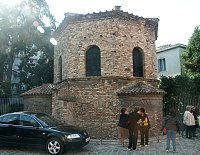
|
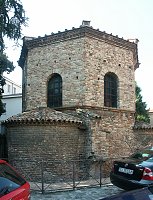
|
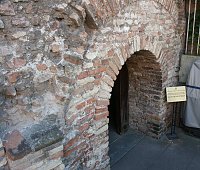
|
The simple interiorIt's probably the case that the lower walls were once decorated, at least with a marble facing, but what remains is the mosaic scene in the dome with Jesus' baptism in the central medallion surrounded by the Apostles in procession. They carry martyr's crowns and follow St. Paul to the altar/throne counterclockwise or Peter, clockwise. |
||
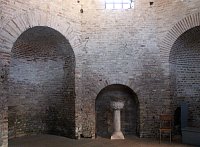
|
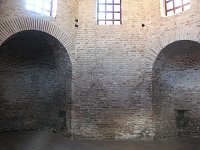
|
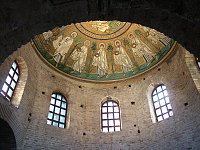
|

|
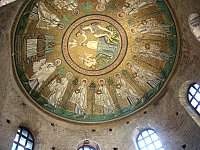
|
Compare the similar scene in the Orthodox Baptistery. The dome mosaics there are more elaborate with several registers in the dome. There the figures are robed beautifully with interesting drapery folds and are set between decorative flounces. |
Figures following St. Peter in procession--readily identifiable by the key | ||
| The figures in procession follow St Peter and St.Paul, meeting in the center at a throne/altar where a jewelled crown is placed (on or in front of a pillow?). See below. According to John Beckwith, this scene represents the "Etimasia, 'the throne set in heaven' of the fourth chapter of the Apocalypse"(111). | 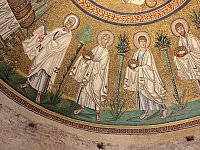
|
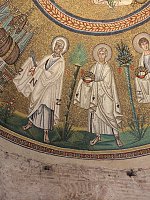
|
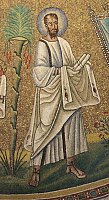
|
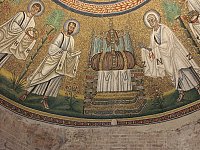
|

|

|

|
A mixture of styles: classical and ByzantineThe figures' faces are individualized even though the robes and drapery folds are repeated and stylized. Similarly, the figures cast shadows at the same time that the background is an unnaturalistic gold. |
Scene of Jesus' baptism with John the Baptist and a personification of the river Jordan, based on classical river gods.Compare the treatment of space in the Orthodox Baptistery. While neither mosaic is very convincing spatially, here the water level is obviously too high to read spatially with the rock on which John the Baptist stands. | ||
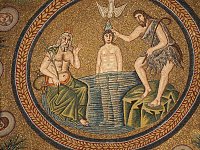
|
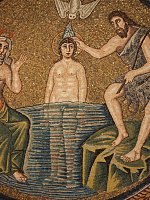
|
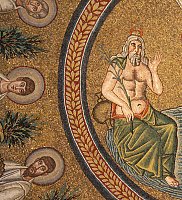
|
 Click here to return to index of art historical sites.
Click here to return to index of art historical sites.
 Click here to return to index of artists and architects.
Click here to return to index of artists and architects.
 Click here to return to chronological index.
Click here to return to chronological index.
 Click here to see the home page of Bluffton University.
Click here to see the home page of Bluffton University.

